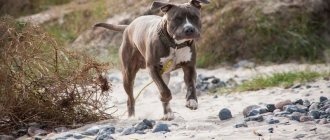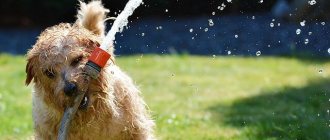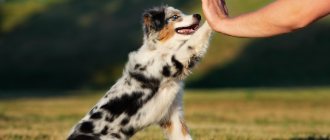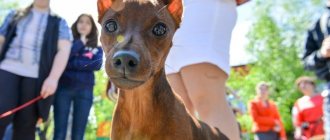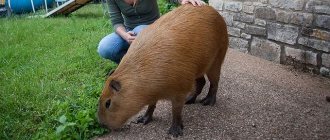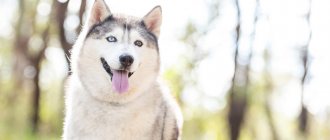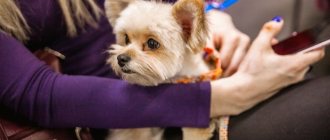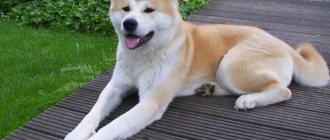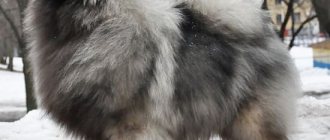If it’s hard for you to force yourself to go out for training, it’s boring to run alone, or you don’t have time to jog or walk the dog separately, we have a great solution to all your problems!
Canicross is an amazing running discipline that refers to the sport of sledding dogs. The term was formed from two words: canis from Latin - dog, cross from English - run.
If we take all types of sledding competitions (snow + non-snow), then only in canicross a person does not use any devices for movement.
For example , skipulling - riding with a small sled, sledding - with a narrow long sled, skijoring - using skis, karting - riding a cart, bike joring - bicycle racing.
So what are the features and advantages of canicross? Is it possible to train a dog to go jogging? What is needed for this? Let's find out!
What disciplines and distances exist
The International Canicross Federation holds World and European Championships in various disciplines:
- sprint race (short distance) with a length of 2 to 3 km;
- long race – from 5 to 7 km;
- relay race is a race in several stages (usually 3) on a circle of 1-1.5 km.
All races are held separately for adult athletes and juniors. There are also competitions for children, but only for a short distance (minimum 1.2 km long, but no more than 2 km). Winners in age categories for men and women are awarded separately:
- 7-10 years;
- 11-14 years old;
- 15-18 years old;
- 19-39 years old;
- 40-49 years old;
- 50-59 years old;
- over 59 years old.
Choosing a true friend
How much stress are you going to give yourself and your dog? Any medium-sized dog, that is, weighing 20–40 kg and height 40–70 cm at the withers, can jog at about 10 km/h for 3–4 km. Please note that short-faced dogs - boxers, bullmastiffs - do not run well. Heavy dogs - mastiffs, Bordeaux dogs, bulldogs, St. Bernards, Great Danes, Caucasian and Central Asian shepherds - are generally contraindicated for running; they have weak joints and hearts.
For the rest, it is useful to run only at a trot, without going into a gallop. Sled breeds (huskies, malamutes, Samoyeds) and hunting dogs (kurtshaars, drathaars, hounds, pointers) run well and for a long time (7–10 km each). But these breeds are poorly accustomed to life in the city; they can rarely be taught to walk without a leash, and when on a leash they tend to pull, pull, and carry their owner along the asphalt.
Thus, some working breeds and companion dogs will be a good pair for jogging - East European Shepherd, Miniature Schnauzer, Airedale Terrier, Collie, all types of retrievers. But keep in mind: if it’s hotter than 25 degrees outside, you can’t load the dog - their body cooling system is much less perfect than that of a person. Dogs find it almost impossible to cope with overheating. So a man’s best friend in the summer is a running partner only in the morning cool.
Dog breeds for canicross
According to the rules of the International Federation, dogs that meet certain criteria can take part in competitions:
- presence of a tattoo or electronic chip;
- passed veterinary control before the start of the competition;
- the pet must be vaccinated - a mandatory rabies vaccination must be done at least 21 days before the start;
- the dog must be over 12 months old;
- Pregnant and lactating females are not allowed;
- The organizers have the right to conduct doping tests on any dog of their choice and, in case of violation, disqualify the participant.
What dogs are best for canicross? The Runner's World publication identifies the following breeds with their own characteristics for different disciplines and distances:
- Australian Shepherd - for obstacle racing.
- Alaskan Malamute - for running in cold weather.
- English Setter - for short, fast runs.
- Belgian Shepherd – for short, fast runs.
- Beagle - for short, fast runs.
- Border Collie - for long distances and running in cold weather (but not in snow).
- Weimaraner – for long distances and trail running.
- Hungarian Vizsla - for long distances, trails and running in the heat.
- Greyhound – for short, fast runs.
- Dalmatian - for long distances.
- Sennenhunds are for running in cold weather.
- Golden Retriever – for short fast runs and long slow runs.
- Kurzhaar – for long distances and trail running.
- Labrador Retriever - for short fast and long slow runs.
- Catahoula Leopard Dog – for long distances.
- German Shepherd - for running in cold weather.
- Parson Russell Terrier - for long distances.
- Pitbull - for short, fast runs.
- Portuguese Water Dog – for long distances and steeplechase.
- Poodle – for long distances.
- Rhodesian Ridgeback – for long distances and running in hot weather.
- Siberian Husky - for running in cold weather.
- Pharaoh's Hound - for short, fast runs.
- Fox Terrier - for running in the heat.
Choose a suitable location
As already mentioned, running between houses or in the center of a crowded city is not recommended. Hard surfaces such as sidewalks, asphalt and concrete roads should be avoided as they place too much stress on your dog's body when running. This is a threat not only to joints, but also to sensitive paw pads. And high air temperatures greatly heat up such surfaces.
Quiet parks are the best. However, do not forget that your pet should not be released into the wild, otherwise he will stop running and begin to get acquainted with his new environment. In addition, he may get scared and run away.
While relaxing, you can play with your dog a little and even give him his favorite treat. This way you reward the dog for obedience.
Equipment for canicross
For the athlete:
- Sportswear – For canicross, regular running clothes will do. In summer - shorts and a T-shirt, in spring and autumn - sports trousers or leg tights, a breathable jacket. In winter, warm yourself (necessarily a hat, gloves, scarf or buff), but not too much. You should go outside with a feeling of slight coolness, then you will not sweat excessively while running.
- Running shoes - choose shoes that match the surface. If the competition is held in a park on flat paths, then you can wear sneakers for asphalt (flat soles with a smooth tread), and if on rough terrain and gravel, it is better to take trail shoes with a lug (aggressive sole pattern). The rules allow the use of spiked sneakers, but the length of the spikes should not exceed 1 mm.
- A special belt to which the pull-up will be attached. The waist belt is attached to the hips, which reduces the load on the back when the dog jerks. A simpler option is a belt bag.
Belt Bag for Running and Pulling
For a dog:
- A riding harness is an alternative to a collar that wraps around the dog's chest and back, making it easier for the pet to move and breathe while running.
Riding harness
- A tug is a special shock-absorbing leash that connects the owner and the dog.
Pull
What to look for when choosing a place to run
The choice of running surface directly affects the health and well-being of your dog. If you frequently run on asphalt, concrete or paving stones, your dog can damage his joints because his paws do not have sufficient shock-absorbing effect.
The best choice for running together is a dirt road, stadium surfaces, or a shady path in the forest or park . If you want to increase the intensity, try running in the sand.
Many dogs enjoy running over rough terrain. Make sure your dog does not step on a sharp or cutting object and injure its paw.
In winter, roads are sprinkled with salt or other chemicals to prevent slipping. Avoid these trails as these substances corrode the dog's paw pads. In the summer, the four-legged runner faces another danger - hot asphalt, which also has a detrimental effect on the animal’s paws.
Remember that dogs become dehydrated faster than people. Therefore, in summer, move your workouts to the early morning and make sure that the air temperature does not rise above 25 degrees.
If you prefer to run in the dark, put a reflective collar on your dog. This will help signal other runners or traffic.
In order not to scare passersby and avoid conflict situations, it is better to use a running leash within the city. It should be short and can be attached to the runner's belt. Let your dog off the leash only if it obeys you perfectly and there are no strangers or animals around.
After a run in the woods, inspect your pet's paws, ears and tail for ticks. Buy a special collar for your dog, and treat the fur with a spray before going out.
How to prepare yourself, and what training your dog needs
To successfully participate in canicross competitions, the dog must learn to listen to commands and master the pull. On your first outings together, just walk with your pet in full gear. When you feel comfortable walking in a bunch, start jogging for short distances. After this, move on to full-fledged running and special training.
It's also important to make sure your dog is comfortable running past strangers. She should not lash out at other dogs, cats, cyclists, runners or pull you to the side. You must learn to stop any deviations from the route.
Finally, you must teach your dog to speed up, slow down, stop, and turn left and right while running. These workouts are no different from training.
Next you will need a training program. As with solo running training, it's best to start at a "conversational pace" - you don't want to be out of breath as you try to command your dog to slow down or tell him to turn. If you are an experienced runner, start with short runs with your dog of 3-5 km 3-4 times a week. Just add them to your main workouts.
Once you feel that both you and your dog are comfortable running together, increase the distance. If your dog can handle distances easily, try running faster. After a few weeks, add a long weekend run of 6-8 km.
Keep in mind that most trainers highly recommend at least one (and preferably two) rest days for your dog during the week. Also consider the characteristics of a particular breed: some do not tolerate heat well, others cannot run long distances. Consult a dog trainer if in doubt.
Equipment for running with a dog
Jogging with a dog should be comfortable and safe for the dog and the athlete.
To do this, it is important to prepare the appropriate equipment. Each element has its own function:
Riding harness
- It is put on the dog (neck, shoulder girdle) so that the pet pulls the athlete with its body weight;
- Harnesses made of synthetics retain their good appearance for a long time, withstand frequent washing, and are wear-resistant. Leather harnesses are not recommended for competitions; they may be useful for first training;
- To select the correct size, consult your retailer/veterinarian. Evaluate whether your fingers fit under the harness. If not, it will put pressure on the dog, it needs to be replaced;
- Check to see if the harness has a special loop behind your pet's croup (back of the body). Its length should be on average 7 cm.
Pull
- For running with your dog to be effective, it is important to choose a good pull;
- This is the strap that connects the dog's harness and the athlete's belt together;
- Ideal length for maintaining a comfortable distance: 2-3 meters;
- Some athletes use a climbing cord as a pull;
- The best material for making a comfortable, elastic pull is polypropylene. It prevents equipment from becoming deformed.
Belt
- The quality of the belt is the convenience of the athlete;
- The place where the belt is fixed is the hips, not the waist;
- The width at the back of the belt should be up to 10 cm to prevent injury when the dog suddenly jerks forward or to the side;
- Just like a dog's harness, the belt should not fit too tightly on the athlete, but should not dangle either.
Carbine
- A carabiner connects the belt to the pull rod;
- Ideally it should be metal;
- The main function of the carabiner is the ability to quickly unhook the belt from the pull if the dog runs to the side. This will prevent falls and injury.
Sneakers
- To avoid harm to your knees and your dog, it is important to choose the right sneakers;
- Canicross is usually run in trail shoes, since the course is most often dirt or rough terrain;
- It is strictly forbidden to wear sneakers with metal spikes that extend beyond the tread by more than 1 mm. In this way, the owner takes care of the safety of his dog, which may trip and fall under the runner’s feet.
Competitions
World and European Championships
The most important competitions for fans of running with dogs are organized by the International Canicross Federation. Competitions are held according to strict rules and regulations and attract a large number of participants from all over the world (for example, in 2022, more than 800 athletes are expected at the World Championships in France). Titles are awarded in the sprint, long race and relay.
Official website – www.canicross.international
Trophée Des Montagnes
These annual competitions are held under the auspices of the International Federation in the French Alps. The race route is distinguished by the complexity of the terrain (numerous mountain ups and downs) and duration (in 2022 the race lasted 9 days and included 10 stages), which is why it is unofficially considered the “Tour de France” of canicross. During the multi-day race, prizes are awarded in the adult (10 stages), junior (7 stages) and children's (5 stages) competitions.
Official website – club.quomodo.com/tropheedesmontagnes
Columbia Gorge Marathon
The annual marathon in the US state of Oregon is held along the picturesque banks of the Columbia River. The event includes a satellite race – a half marathon in canicross format. At the finish line, both the owner and the pet will receive their own medal.
Official website – columbiagorgemarathon.com
Doggie Dash & Dawdle
A charity race organized by the Foundation for Helping Homeless Dogs and Cats. Participants form teams and raise funds for various causes, and both the runners themselves and third-party individuals and organizations can donate money. Competitions are held at two distances - 1 mile and 5 km.
Official website – doggiedashanddawdle.givecloud.co
Russian Canicross Championship
The Russian Federation of Sled Sports organizes regional competitions, and at the end of the year holds the main competition - the National Championship in the adult, junior, veteran and children's competitions, as well as in the relay race.
In addition to canicross, the calendar also includes competitions in snow disciplines.
Official website – fes-russia.ru
Cross "Fast Dog"
The cross-country race is held 2 times a year - in spring and summer in the Bitsevsky forest of Moscow. The 2-kilometer track is laid out in one circle, the surface is dirt.
Official website – fastdogxc.runc.run
HARD TRAIL
As part of a series of starts in the forests and fields of the Leningrad region, there was also a place for canicross. In the village of Semiozerye, a 6 km race is held for four-legged friends over varied terrain - rough terrain, sand, forest. Snow starts are also expected next year.
Official website – hardadventure.ru
RUSSIAN EXTREME DOG TRAIL
The organizers of the event went beyond ordinary canicross and made it a real “Hero Race” for the owner-pet team. On the race course you will find many obstacles, barriers, and water obstacles. In addition to the individual competition, team competitions are also held.
Official website – dogtrail.ru
Rules
Canicross is a sport, and in any sport there are rules. There are certain requirements for races with dogs:
- Course – races can be organized on dirt or shock-absorbing surfaces. This could be a rural area, a forest belt or a stadium. It is strictly forbidden to run on hard surfaces and asphalt roads.
- Sportsmanship - all participants start in turn. If it happens that an opponent is catching up or overtaking, you cannot cut, push or hinder him in any other way.
- Hand control - a person should under no circumstances control the dog (pulling) with their hands.
- Age of participants - for dogs the age of participation is from 1 year, for people - 6 years.
The goal of the competition is to reach the finish line in the shortest possible time. At the same time, there is a system of penalty points that reduce the final result for violations. These include:
- overtaking a dog or being behind a person;
- leaving the race, animals missing the finishing gate;
- controlling your pet using your hands;
- aggression and provocations towards other participants.
It is forbidden to involve third parties in the competition to spur or call the dog, and it is forbidden to feed the animal while passing the course. The winner is the couple with the maximum number of points.
Start calendar 2021-2022
24.10.2021
- Name: Columbia Gorge Marathon
- Venue: Hood River, Oregon, USA
- Information: www.columbiagorgemarathon.com
07.11.2021
- Title – Doggie Dash & Dawdle
- Venue: Albuquerque, New Mexico, USA
- Info: doggiedashanddawdle.givecloud.co
16.01.2022
- Name – HARD TRAIL Snow
- Venue: Leningrad region, Russia
- Information: hardadventure.ru
28.04-01.05.2022
- Title – World Championship
- Venue: Pledran, France
- Information: canicross.international
July-August 2022
- Title – Trophée Des Montagnes
- Venue: France
- Information: club.quomodo.com/tropheedesmontagnes
Photo: instagram.com/runcomrun, skye.sunny.and.ray; unsplash.com/Sherise VD, Patrick Hendry, kevin laminto, Alex Hay, Kenan Kitchen
Parasite protection
Every dog owner should remember to protect themselves from ticks and other parasites. There are many highly effective products available on the market, and if it is difficult to choose, seek advice from your veterinarian. Price should not be the determining factor when purchasing - what matters is how long the protection lasts.
In summer, ticks pose the greatest danger. Diseases caused by these parasites have many negative consequences. They can pose a real threat to the health and even life of the dog. Despite the use of preventive measures, you should carefully examine your pet after returning home.
Read also
- Can walking be considered a sport? Does it help you lose weight? How many kilometers a day should you walk?
- How much do tennis lessons cost? How much will it cost to rent a court and use a coach? How to choose a racket?
- What is crossfit: history of origin and who is this sport suitable for?
- The benefits of swimming - what strengthens swimming in the pool and what muscles work, how many calories are burned from swimming
- The benefits of cycling - losing weight and developing muscle strength
- Nordic walking is very useful. We talk about the correct technique and how to choose poles for Nordic walking
- Workout: what is it and how to start doing it? What exercises are suitable for a beginner?
- Zorbing: what kind of entertainment is it, who is it suitable for and how to prepare for it
- Windsurfing for beginners - answers to questions about riding a board with a sail
- Bungee or bungee jumping. Is it sport or entertainment? How is it different from rope jumping?
What accessories to buy
To run with your pet, you need to purchase the appropriate accessories to make the animal comfortable. The main criterion is quality. This way you will avoid a situation where the leash gets damaged at the most inopportune moment.
Harness. An absolute necessity. Many people make the mistake of putting a collar on their pet. Sudden jolts while running can strain the cervical vertebrae and lead to a variety of negative health consequences.
Suspenders that can be adjusted to your pet's size are the best option. The straps should not be tightened too tightly, as this will cause discomfort. A harness with an extra handle also seems like a good option: you can pull your dog towards you and hold him in place.
Leash. The strap should be made of elastic material that adapts to environmental conditions. At the same time, it must be durable and resistant to the negative effects of external factors. There must be a carabiner, shock-absorbing elements are also important to increase the level of comfort.
Shoes for dogs. Recommended for running on uneven mountain trails where there may be a lot of sharp rocks. It's also a good idea to have shoes in case your dog gets injured: exposure to sand, grass, and dirt slows down the healing process and can even lead to infection. Lack of hygiene is an ideal environment for bacteria.
What to do after the finish
Many people advise finishing your run 20-30 minutes before heading home. It is best to walk the last stage to the house to gradually calm the pet down. Of course, if you see that the dog still has energy, the approach can be changed: for example, running a slalom between trees or overcoming small obstacles.
As already mentioned, when you return home, you should check your pet for parasites. The sooner you detect their presence, the better. It is also worth feeding your pet his favorite food. The upside is that active dogs are less likely to become overweight and have excess body fat, so you can pamper them with treats without harming their health.
Frisbee freestyle
If the classic frisbee dog is about fetching flying discs, then freestyle frisbee is a real acrobatic exercise that requires strength and dexterity from both the dog and its owner. This spectacular sport requires complete freedom of creativity.
You can invent and implement absolutely any tricks with the help of your pet and a set of plastic plates. But be prepared to spend a lot of time: truly spectacular performances require long, grueling training. Agile and jumping dogs perform best in Frisbee freestyle: small greyhounds, Jack Russell terriers, Australian shepherds.
What to feed an active dog
Those who decide to regularly run with their dog should remember that nutritional requirements increase significantly. When your dog is active, he burns many more calories, so it is very important for him to eat more protein and various fats.
You can increase the frequency of meals or focus on a specialized food designed for active dogs. The second solution is much more convenient - you don’t have to wonder whether your pet’s diet is correctly adapted to its lifestyle. You will be sure that the food will provide him with the necessary microelements, nutrients, vitamins and minerals.
Remember that you should not suddenly change your eating habits - this can lead to disruption of the regulation of digestive processes. You need to increase the frequency of meals or change your diet gradually - sometimes this process takes several weeks. It is very important not to feed your pet immediately before or immediately after exercise. It is worth knowing that running on a full stomach is not the best idea; it is better to wait two to three hours. The dog should feel at ease and comfortable.
Doga yoga
View this post on Instagram
An unusual version of yoga is gaining popularity around the world. Doga yoga has its roots, of course, in India. Yogis saw that animals showed interest in meditation and decided to teach their four-legged friends to train together. Classes are held as usual: a person performs certain asanas, which are interpreted for pair yoga. For example, small dogs become a burden, which significantly complicates the training, while large breed dogs can become a support when performing asanas.
View this post on Instagram
It’s surprising that the yogis didn’t stop at dogs and cats. The fitness craze in the US has led to people doing yoga with goats. Practitioners note that this is a great way to relieve stress, because these animals are very sociable and friendly. They can jump on a person's back while he is in plank position, lick his face and try to eat his hair. The effectiveness of such a workout is questionable, but it will definitely lift your mood for the whole day. So, if suddenly there is a goat in your yard, feel free to involve it in training.
View this post on Instagram
For emotional relief from what is happening, just look at the yoga dog.
View this post on Instagram
